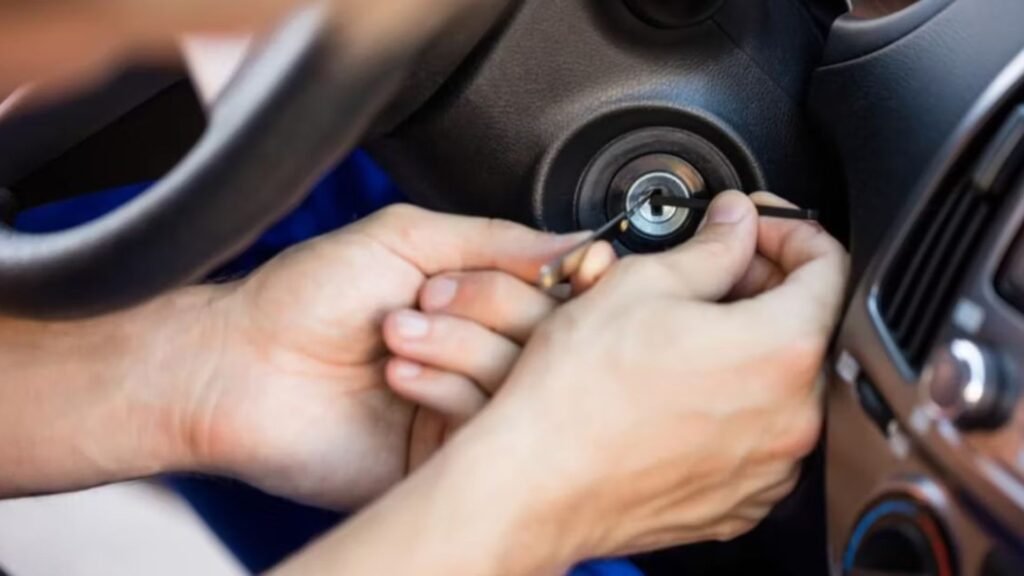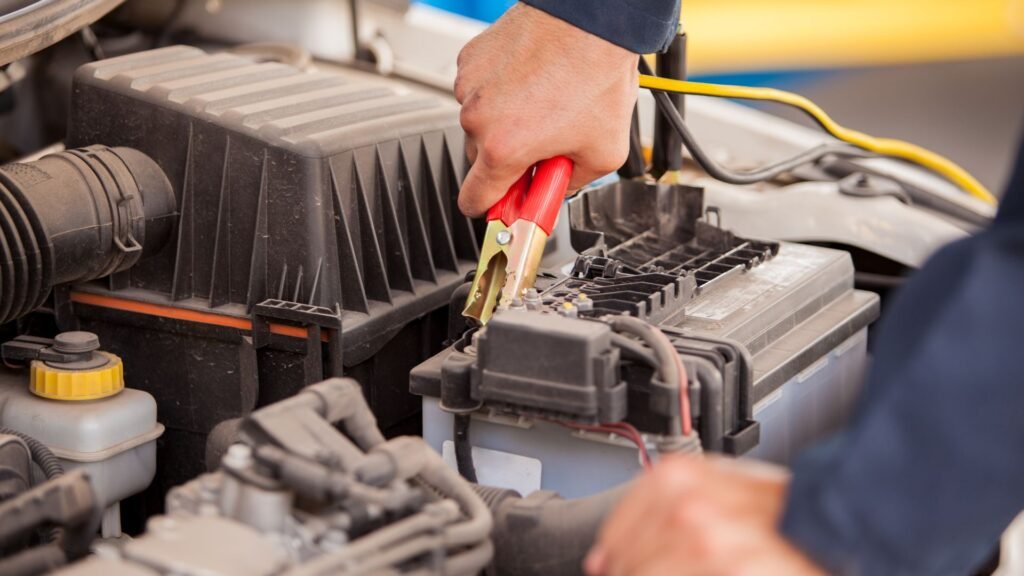Selling a car in NZ can be straightforward if you know the key steps. In this guide, we’ll cover preparing your car, setting the right price, listing it effectively, managing inquiries, and finalizing the sale. You’ll also learn about important legal considerations to ensure a smooth transaction. Read on to get started with selling a car NZ.
Key Takeaways
- Prepare your car meticulously by cleaning, servicing, and documenting its history to enhance appeal and value.
- Set a competitive asking price through thorough evaluation and comparison with similar vehicles in the market.
- Be transparent with potential buyers, ensuring clear communication regarding the car’s condition, documentation, and legal obligations to foster trust.
Preparing Your Car for Sale
The first impression your car makes on potential buyers can significantly impact the sale price. Proper preparation is crucial. From a buyer’s perspective, a well-maintained, clean car is far more attractive and likely to fetch a higher price than one that appears neglected. Preparation involves several steps, including servicing, cleaning, and gathering all necessary documents.
Thoroughly cleaning the car inside and out, including detailing if possible, can make a significant difference. Consider investing in professional grooming to ensure every nook and cranny is spotless. A recent service and inspection will reassure potential buyers of the car’s condition, boosting their confidence in purchasing your vehicle.
Finally, gather all the vehicle’s details and documents. This includes service records, maintenance invoices, and receipts for repairs. Having these documents available shows that the car has been well-maintained and can simplify the transaction process. Let’s examine each of these preparation steps in more detail.
Car Service and Maintenance
Getting a car service before selling reassures buyers about its condition. Service cars according to manufacturer-recommended intervals to maintain optimal performance. This not only ensures that the vehicle is running smoothly but also provides proof of regular maintenance, which can positively influence the car’s value.
Address any minor repairs or issues that could deter potential buyers.
Detailing the Car Inside and Out
A clean car inside and out shows that it has been well-maintained. If your budget allows, professional grooming can save time and effort while yielding better visual results.
Professional detailing enhances the vehicle’s overall appearance, making it more appealing to potential buyers. Clean those hard-to-reach spots, as a thoroughly cleaned car can significantly boost its appeal.
Gathering Vehicle Details and Documents
A vehicle must have a valid Warrant of Fitness (WoF) issued within one month before the sale. This ensures the car is roadworthy and builds buyer confidence. Collect all receipts for servicing, maintenance invoices, and vehicle registration papers. Service history and maintenance records give potential buyers peace of mind about the car’s condition.
When preparing to sell, be honest about the vehicle’s condition. Include comprehensive vehicle details like make, model, year, and specifications. Mentioning any past accidents or repairs helps maintain transparency. Clear and detailed documentation can make your listing stand out and attract serious buyers.
Setting the Right Asking Price
Setting the right asking price is crucial in attracting potential buyers while ensuring you get a fair deal. Factors influencing the asking price include the car’s condition, make, model, and age. Investing time in preparation can significantly influence the final sale price.
Consider both the car’s condition and the prices of similar makes and models to determine a realistic asking price. Adjust your asking price based on urgency; set a higher price if you can afford to wait, or a lower price to expedite the sale.
Next, we’ll explore evaluating your car’s worth, comparing similar cars, and factoring in outstanding fees.
Evaluating Car Worth
Mileage, service history, and previous accidents heavily influence a vehicle’s value. Online valuation tools provide rough estimates based on various metrics, including market trends. These tools help estimate your car’s market value, but be sure to consider unique features and overall condition when finalizing the price.
Comparing Similar Cars
Researching local listings identifies common price points for comparable vehicles. Investigating these listings helps establish a fair market rate for your car.
Adjust your price by assessing the unique features or mechanical condition of your car compared to similar listings to stand out.
Factoring in Outstanding Fees
Consider any outstanding fees, such as outstanding licence fees or road user charges, as they can affect the overall sale price. Inform potential buyers of any outstanding fees and ensure they understand their responsibility for fees after the purchase.
For diesel models, ensure all road user charges (RUC) are paid and acknowledged, as overdue RUC will concern potential buyers.
Listing Your Car
Creating an effective listing attracts potential buyers. Include a compelling title that captures attention. Captivating photos are crucial since listings with images perform better. A concise and honest description highlighting essential details is important for an effective listing. Transparency builds trust.
Platforms like Auto Trader connect you with buyers and expedite the selling process. Social media engages local buyers while Auto Trader has a broader audience. Consider speed of sale, ease of use, and audience reach when choosing the best platform.
Next, we’ll explore choosing where to list, crafting the description, and taking quality photos.
Choosing Where to List
Choosing the right platform significantly impacts how quickly and efficiently you sell your car. Auto Trader connects you with buyers and expedites the selling process. Consider speed of sale, ease of use, and audience reach when choosing the best platform.
Different platforms offer varying levels of reach; for example, social media engages local buyers while Auto Trader has a broader audience.
Crafting the Description
Highlight key features and benefits like fuel efficiency, technology, safety ratings, and unique selling points. Be honest about any damage or scratches on the vehicle to maintain transparency.
Detailed information about the vehicle’s details and service history reassures buyers.
Taking Quality Photos
Photos attract buyers, and listings with images perform better. Ensure the car is clean inside and out. Well-presented cars have a better chance of selling. It’s important to showcase your vehicle effectively. Use high-quality photos in the listing, ideally under 5MB.
Take photos in the best light to showcase your vehicle effectively.
Managing Inquiries and Viewings
Effectively managing inquiries and viewings is crucial in selling your car. Answer questions promptly and provide additional information to build trust with potential buyers and car sellers. Schedule test drives at convenient times and accompany the potential buyer. Check their driving license before allowing them to drive.
Meet potential buyers in public places and avoid sharing personal details until necessary. Consider having a friend or family member present during viewings for added safety.
Next, let’s explore responding to potential buyers, arranging test drives, and ensuring safety during viewings.
Responding to Potential Buyers
Promptly addressing buyer inquiries demonstrates professionalism and builds trust. Quick and informative responses to buyer questions facilitate smoother transactions.
Having all maintenance receipts readily available eases buyer concerns about the car’s condition.
Arranging Test Drives
Check the potential buyer’s driving license before allowing them to test drive. Accompanying potential buyers during test drives enhances safety and allows direct communication.
Ask for potential buyers’ car keys as collateral during a test drive to ensure the security of your vehicle. This makes the process safer and more organized, providing a hassle-free experience for both parties.
Ensuring Safety During Viewings
Meeting potential buyers in public areas maintains safety and limits the exposure of personal information. Having a friend or family member accompany you during viewings provides additional safety and support.
This way, you can feel reassured during the car viewing process and focus on showcasing your car privately.
Completing the Sale
Completing the sale involves several crucial steps. Once you’ve agreed on a price, a deposit is typically required to secure the sale. The purchase receipt should include a description of the car, the purchase amount, date, and the names and addresses of both parties. When the buyer wants to negotiate a price, decide how firm you are on the price or consider if the offer is reasonable.
Handling payment safely and transferring ownership are the final steps. Bank transfers are the safest option for receiving payment. Avoid accepting large amounts of cash or personal cheques as payment. Sellers must promptly notify the NZ Transport Agency once a vehicle is sold to avoid being held accountable for any fines or charges by the buyer.
Next, let’s explore negotiating the final price, handling payment safely, and transferring ownership.
Negotiating the Final Price
Be prepared to discuss and counter offers while knowing your minimum acceptable price. Buyers typically offer a deposit of several hundred dollars once a price is agreed upon. Receipts for the deposit should include a description of the car, the agreed sale price, deposit amount, payment date, and conditions.
Both buyers and sellers should sign the receipts after a deposit is taken to ensure transparency.
Handling Payment Safely
Bank transfers are the safest option for receiving payment. Avoid accepting large amounts of cash or personal cheques as payment. Handling payment safely is crucial to avoid potential scams and issues.
Always ensure the payment is cleared in your bank account before the buyer takes possession of the vehicle.
Transferring Ownership
Sellers must promptly notify the NZ Transport Agency once a vehicle is sold to avoid being held accountable for any fines or charges by the buyer. It’s important to notify the NZTA immediately after selling a vehicle to prevent receiving the new owner’s fines and fees.
Request the buyer to provide proof that they have informed the NZTA about the change of ownership. Both the buyer and seller must complete specific paperwork to finalize the change of ownership.
Legal Considerations
Sellers need to be aware of their legal obligations to avoid potential liabilities, including disclosing vehicle history. Inform the NZ Transport Agency immediately after selling your vehicle to avoid any future liabilities. If a diesel vehicle’s road user charges are overdue at the time of sale, the seller commits an offense and the buyer may inherit unpaid fees.
Selling a vehicle ‘as is, where is’ does not absolve the seller from meeting consumer and transport laws. Now, let’s explore how to protect yourself legally, understanding the buyer’s obligations, and dealing with personalized plates.
Protecting Yourself Legally
A sales agreement outlines the terms of the sale and helps protect both parties by clarifying expectations. Keep copies of all correspondence and agreements related to the sale to ensure transparency and protection in case of disputes. Inform the buyer of their responsibilities, such as registering the vehicle in their name and paying any outstanding fees.
When selling a vehicle ‘as is, where is’, clearly state the car’s condition to ensure compliance with consumer laws and avoid liability.
Understanding Buyer’s Obligations
Being upfront about any outstanding fees can foster trust and transparency with potential buyers. Any unpaid fees should be included in the total price to avoid buyer disputes. Buyers appreciate clarity regarding any existing fees or charges related to the vehicle before purchase.
Both buyers and sellers must complete change of ownership paperwork. The seller fills out the Certificate of Registration form, known as MR13A. Meanwhile, the buyer is responsible for completing form MR13B.
Dealing with Personalized Plates
When selling a vehicle with personalized plates, complete a Transfer of Entitlement form with the new owner. It’s advisable to create a written agreement that specifies all terms of the sale to protect both parties involved.
Complete the Transfer of Entitlement form on the LicenSys NZ website to ensure the proper transfer of personalized plates.
Selling Special Cases
Selling cars in special circumstances can be a bit more challenging. Inform buyers if the vehicle is unregistered and explain the process and costs involved in re-registering. Make sure road user charges (RUC) are up to date. Clearly state when selling a vehicle ‘as is, where is’. Ensure compliance with consumer laws and be upfront about the car’s condition.
Let’s explore further details on selling unregistered vehicles, handling diesel vehicles, and selling ‘as is, where is’. Each of these special cases comes with its own set of requirements and challenges, so it’s essential to be well-informed and transparent with potential buyers.
Selling Unregistered Vehicles
When selling an unregistered vehicle, inform buyers that the vehicle lacks registration, which prevents the buyer from registering it until the issue is resolved. The seller is responsible for outstanding licensing fees until the date of change.
To register a vehicle, you must pay a one-time fee. This fee is used to add your vehicle to the Motor Vehicle Register. If a vehicle is unlicensed for 12 months, its registration gets canceled.
Handling Diesel Vehicles
When determining the sale price, take into account the unpaid RUC. It’s an important factor in your pricing strategy. If the vehicle’s RUC is overdue at the time of sale, the seller commits an offense; the buyer might be responsible for unpaid fees.
It’s essential to inform the buyer about any outstanding road user charges to avoid future liability.
Selling ‘As Is, Where Is’
If selling a car without a current WoF, it must be advertised ‘as is, where is’ and the buyer needs to provide a written understanding. Selling a vehicle ‘as is, where is’ means the buyer accepts the car in its current state without guarantees from the seller.
Being upfront about the car’s condition, including any issues or repairs needed, builds trust with potential buyers.
Summary
Selling a car in New Zealand involves several steps, each crucial to achieving a successful sale. From preparing your car and setting the right asking price to managing inquiries, arranging test drives, and completing the sale legally and safely, this guide covers it all. Following these steps can help you attract potential buyers, gain their trust, and ultimately sell your car at the best price possible.
By being well-prepared and transparent, you can navigate the car-selling process with confidence and ease. Remember to always be honest about your car’s condition, keep all necessary documents ready, and prioritize safety during viewings and transactions. With these tips in mind, you’re well on your way to a successful car sale. If you’re in the Waikato region, feel free to contact Cash For Cars Hamilton for a free instant quote on your vehicle.
Frequently Asked Questions
What documents do I need to sell my car?
To sell your car, gather a recent Warrant of Fitness (WoF), service history, maintenance receipts, and vehicle registration papers. Having these documents ready will make the process smoother and help you achieve a successful sale!
How do I set the right asking price for my car?
To set the right asking price for your car, evaluate its condition, make, model, and age, then compare it with similar cars. Utilizing online valuation tools can also guide you in determining a fair price.
Where should I list my car for sale?
List your car on platforms like Auto Trader and social media to maximize your reach and speed up the sale. Focus on what matters most to you for the best results!
How can I ensure safety during test drives?
To ensure safety during test drives, always verify the buyer’s driving license and accompany them throughout the drive while holding their car keys as collateral. These precautions will help you protect yourself and your vehicle.
What should I do if my car is unregistered?
If your car is unregistered, take action by paying any outstanding licensing fees and starting the re-registration process. Being proactive will get you back on the road quickly!



